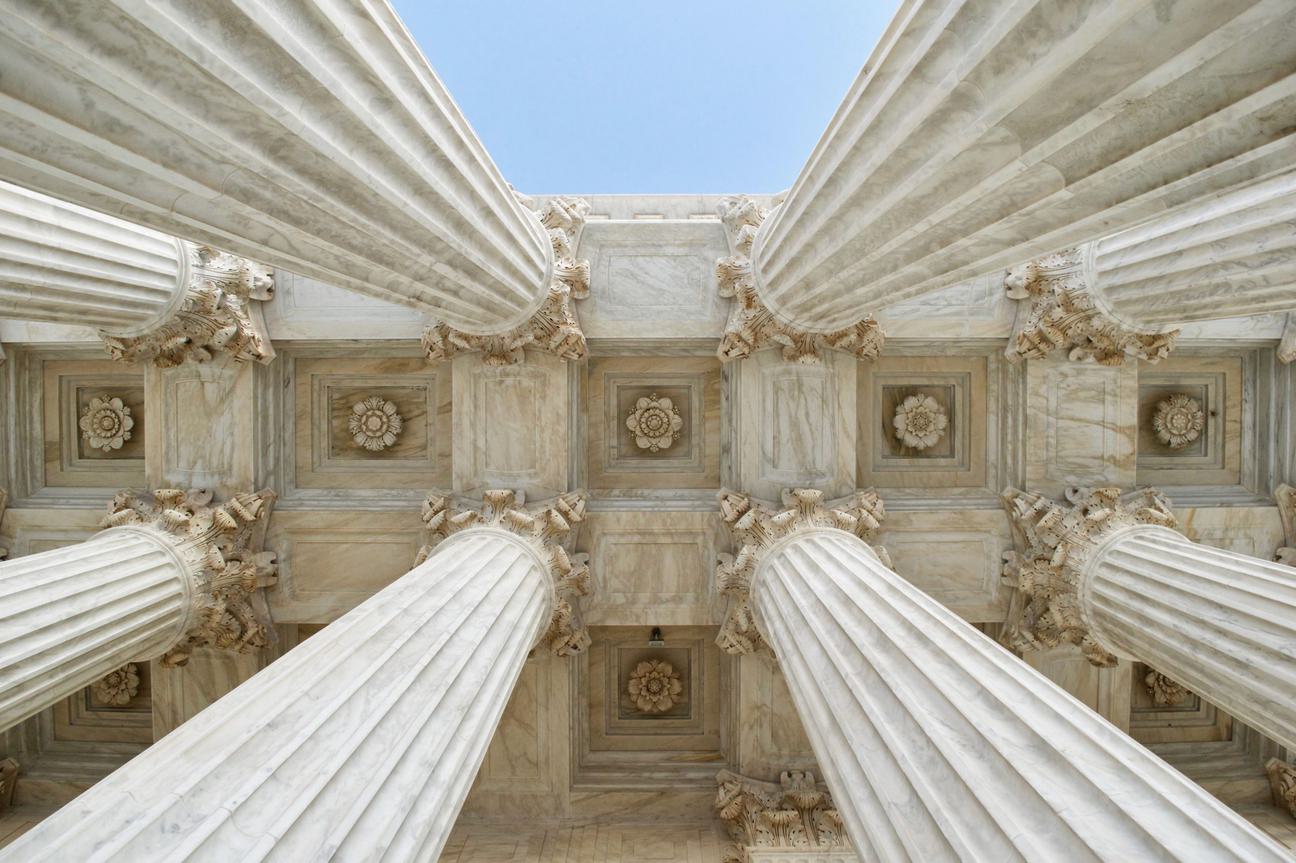Expert Q&A on pass-on of overcharge

Share
Expert Economists Nadine Watson, Frédéric Palomino, Justin Coombs and David Sevy participated in a Q&A with Financier Worldwide for their January issue on how to quantify the passing-on of overcharges resulting from competition law infringements and the key challenges involved in assessing claims through economic theory and data analysis.
In the context of competition law infringements, could you explain the concept of passing on as it relates to overcharge? How does this concept function in practice within supply chains?
Palomino: The pass-on of overcharge is related to a firm’s incentives to respond to increases in its input costs by raising prices. In the context of competition law, the initial overcharge may be seen as an increase in the input costs for a direct purchaser. The pass-on refers to how such a cost increase would affect, firstly, prices set by the direct purchaser in the downstream market – a ‘price effect’ – and secondly, the value of the lost sales supplied by the direct purchaser as a result of the price increase – a ‘volume effect’. When courts estimate the pass-on of an overcharge in a damages action, they need to identify the overcharge harm which remains at a given level of the supply chain, and the overcharge that was indirectly transferred down the supply chain.
Coombs: It is important to remember that pass-on does not reduce the size of damages that a defendant is liable for; instead, it simply allocates it between different potential claimants. In the past, defendants have often seen pass-on as a sort of ‘get out of jail’ card, that they can use to avoid, or at least substantially reduce, damages claims. Faced with a claim from a direct purchaser, defendants would argue that the claimant had passed-on the cartel overcharge to its own customers and had therefore suffered no loss or suffered a much smaller reduction in profits than it was claiming. But defendants need to remember that if they are successful in these arguments, they might open the possibility of future claims from indirect customers. Pass-on does not mean that the overcharge evaporates into thin air. Instead, it simply means it has been borne, in whole or in part, by customers further down the supply chain that may be able to claim damages – especially if a court has already ruled that the overcharge was passed on to them.
What are the key challenges involved in assessing pass-on of overcharge? What is the interaction between overcharge, passing on and volume effects?
Palomino: Economic theory is very useful in determining the likelihood of the pass-on of overcharge. For example, economic theory indicates that the relevant cost category for short run price formation is the incremental cost incurred when buying one additional unit of input, which includes all variables costs. Therefore, to identify pass-on effects, it is important to determine whether the input cost incurred by a purchaser facing an overcharge is a variable cost, such as a cost increasing with the input quantity the purchaser orders, or a fixed cost, which does not increase with the input quantity ordered. As a consequence, the time frame is also an important component of the analysis, as the longer the relevant time frame, the greater the proportion of total costs that should be considered as variable. Other economic measures, such as price elasticity of demand, are important to estimate the volume effect.
Coombs: The degree of pass-on depends on factors such as the cost structure of the downstream firm, the direct customer of the cartel, and the structure of the downstream market into which it sells. As with all aspects of a damages assessment, it is important to assess the facts of the case at hand, including any available data. Economic theory shows that the degree of pass-on will depend on these facts and it is dangerous to rely on presumptions. For example, it is tempting to assume that firms with market power may have a freedom to pass-on that firms facing intense competition lack. But the opposite may be true. Firms facing intense competition are likely to have very slim profit margins, meaning they have little scope to absorb cost increases which instead must be wholly, or at least largely, passed on to their own customers. In contrast, firms with significant market power are likely to be making higher profit margins, meaning they will have more scope to absorb price increases rather than pass them on. In both cases, while economic theory helps us understand the factors that determine the degree of pass-on, the degree of pass-on is not something that can be predicted using economic theory alone. Instead, it is something that needs to be measured, or estimated, using the available evidence and data.
Watson: Pass-on and volume effect are intrinsically linked because price increases normally lead to decreases in demand. From an economic perspective, it is thus impossible to ignore volume effects when claiming pass-on. For claimants that sell on or use the cartelised product as an input, the total harm will depend on both the price and volume effects of transferring the overcharge down the supply chain. The harm caused by cost increases will decline as the pass-on rate increases, while the harm caused by lost sales will increase. Which of these effects predominates will depend on the magnitude of the cost increase and the elasticity of demand for the downstream product. Until now, volume effects have received little attention because they were considered of second order and difficult to estimate. However, volume effects are likely to attract more attention going forward as familiarity with the empirical methods used to estimate effects and demand elasticities increases, as well as the access to downstream market data through disclosure procedures.
What forensic, statistical and economic analyses are typically used to assess passing on? Could you describe the criteria that should be considered when selecting the best approach for a given situation?
Palomino: When estimating an overcharge, either direct or indirect, the objective is to compensate victims for the harm suffered and, therefore, to put them in the position they would have been had the infringement not occurred. To be able to assess this position, one needs to compare the observed situation, the situation in which the infringement took place, with a hypothetical situation, the so-called ‘counterfactual scenario’, namely the situation in which the infringement did not take place. To construct the counterfactual scenario, quantitative evidence is often necessary. Such evidence may include data on actual prices, costs or margins, as well as external indicators which would influence firms’ pricing decisions, such as aggregated measures of economic activity – GDP growth, inflation and so on. The possible approaches to constructing a counterfactual scenario and estimating pass-on are the same as those used for estimating a direct overcharge: either comparative approaches over time, or based on different markets, or a statistical approach of regression analysis which makes it possible to control for factors which have led to price variations but that are independent of the sanctioned practices.
Coombs: Ideally, one would try to directly measure the impact of the cartel on downstream prices, in the same way that we estimate the impact of the cartel itself on prices, controlling for changes in other factors that may have affected prices. Alternatively, we could look at how other changes in input costs have affected the prices of the downstream firm. In this case, it is important to consider the magnitude of the price changes involved and how they compare to the impact of the cartel: a 1 percent increase in costs might not be passed on in the same way as a 20 percent increase in costs, for example. If we lack evidence on pass-on by the firm itself, we could look for similar evidence regarding other firms in the same industry or firms in similar industries. The further away this evidence is from the direct customer of the cartel, the more important it becomes to consider any differences between the two situations.
Watson: Another relevant aspect to highlight regarding pass-on is the importance of considering how downstream products are sold and whether the cartelised product can be sold in a used product market at the end of its lifecycle. How the downstream product is sold, be it cash purchase or rental, will influence how the pass-on rate needs to be evaluated. In the case of a cartelised product that is rented to downstream customers, for example, the impact of the overcharge may be observed directly on the rental price or it may be observed in other components of the rental agreement, such as the length of the rental contract or the amount of maintenance included. In addition, if the cartelised product can be sold after it has been used, this creates another pass-on opportunity that must be considered.
Could you outline the legal frameworks that provide the principal basis for pass-on infringements? What are the differences in follow-on cartel cases under article 102 of the Treaty on the Functioning of the European Union (TFEU) compared to article 101? And how do the specifics affect the nature and role of economic modelling in these cases?
Palomino: The European Damages Directive does not make a distinction between infringement of article 101 of the TFEU and infringement of article 102 of the TFEU, as in both cases the aim is compensation for harm suffered and to place the harmed party in the position it would have been had the infringement not occurred. Following the Damages Directive, the absence of pass-on from direct victims or claimants is assumed and the burden of proof is on the infringer or defendant. Conversely, for indirect victims or claimants further down the supply chain relative to the level where the infringement occurred, the burden of proof is on the victim or claimant. The economic nature of the infringement, such as a horizontal agreement leading to a price increase, input foreclosure, price discrimination, and so on, and data availability will drive the approach taken to estimate the pass-on.
Sevy: Follow-on litigations in relation to article 102 infringements raise different assessment issues compared with those arising from article 101 infringements. Almost all the former cases revolve around exclusionary rather than exploitative practices, where the primary victims are not customers who paid excessive prices but are competitors that were excluded from certain markets in which the sanctioned company was active. The primary focus in these cases is on assessing how much market share a claimant has lost. Assessing counterfactual prices and profits, although relevant and raising significant challenges, is usually a lesser priority because, unlike article 101 cases, building these counterfactual elements may not easily rely on past market outcomes. This is the case especially when practices have hindered the claimant from entering or expanding in a market and there is no history of the claimant having occupied a significant position in the market. Reviewing the claimant’s expansion plans can then offer some interesting insights. We would also not expect pass-on to play as large a role as in article 101 cases, because it is not expected that claimants could compensate for their exclusion by charging higher prices. On the contrary, they may have had to reduce their prices and compress their margin to remain in the market, compared to what they would have charged absent the exclusionary practices. The same would obviously not apply to exploitative practices, in which pass-on would become again as central an issue as with article 101 follow-on litigation.
What trends are you seeing in terms of leniency, settlement decisions and the production of economic evidence in these cases? To what extent are data flows a key factor in litigation proceedings?
Sevy: Compared to ‘standard’ litigation cases, follow-on cases usually come with supporting evidence regarding liability, because the infringement has been qualified at the administrative stage. The evidence collected at this stage and captured in the decision becomes a key element to support damages claims – and its interpretation is an important battlefield before courts. In anticipation of this ruling, companies under investigation may opt for a settlement that limits the amount of information in relation to the possible effects of the infringement displayed in the administrative ruling, compared to a standard infringement decision. They may also shy away from leniency, as claimants could take advantage of the evidence adduced in a successful leniency application. These concerns are evidently on the rise, with an increasing amount of information and data that can be collected and handled at the administrative stage – possibly at the request of competition agencies – and which may need to be shared with claimants at the litigation stage. Even if the economic analysis is performed at the administrative stage are not extensive, the mere fact that more sophisticated empirical methods requiring extensive data analysis are increasingly used to properly assess follow-on damages – and are part of authorities’ or courts’ guidance – means that large-scale data disclosure is considered a logical step in follow-on litigations. It has become commonplace, and a matter of credibility, that expert submissions are accompanied with significant data stacks and programmes that allow courts’ and parties’ experts to check all the calculations performed and understand the key drivers of a damage assessment. This should facilitate the courts’ tasks, to the extent it allows them to single out the main points of agreement and disagreement between claimants and defendants, and to focus their assessment on pivotal aspects.
Once an expert has developed a framework for quantifying the effects of pass-on and assessed the total extent of harm suffered by a claimant, what considerations need to be made when producing a suitable report for a court or tribunal?
Palomino: Impartiality and independence are extremely important. The role of an expert is to provide guidance to judges, so that they are fully informed when making their decision. It is therefore crucial to show the robustness of the damage estimation. For example, in a regression analysis, we must demonstrate that replacing a macroeconomic control variable with another related one does not impact the order of magnitude of the damage estimation. The expert is expected to undertake their analysis in accordance with sound and widely accepted economic principles. Therefore, the ability to explain economic and financial concepts in a very pedagogical way is important, so that the judge fully understands why a framework and certain economic variables were chosen for the analysis.
Looking ahead, do you expect to see an increase in pass-on of overcharge cases? Will the role of experts in terms of presenting their analysis become increasingly important in determining these cases?
Palomino: The European Damages Directive has made it easier for claimants to bring actions and has also raised the awareness of firms that they are entitled to compensation when they may have been victims of competition law infringements. For several years now, we have observed a strong development of actions for damages following sanctions for anti-competitive practices. Currently, pass-on is mostly invoked by the defence seeking correct estimation of the damage suffered by a direct victim. However, claims by indirect victims seems to be the next natural step in the development of follow-on claims.
This Q&A was originally published by Financier Worldwide and is available on their website and in PDF format here. The views expressed are those of the authors only and do not necessarily represent the views of Compass Lexecon, its management, its subsidiaries, its affiliates, its employees, or clients.

